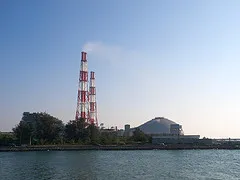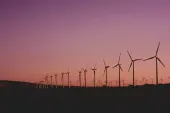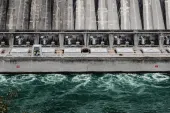
Indochina to amp up investments in thermal and hydro power projects
Vietnam, Cambodia and Laos are planning for significant investment increases in their electricity generation capacity in order to keep pace with the rising demand.
Saigon Asset Management, the investment manager of the two listed investment funds Vietnam Equity Holding and Vietnam Property Holding, announced that it will establish and raise funds for an Indochina Energy Fund. The goal of the fund is to invest in thermal and hydro power projects and companies in the countries of Vietnam, Cambodia, and Laos. Energy demand, driven by the rapidly expanding industrial base and per capita consumption, is increasing at about 2.0 to 2.5 times the GDP growth rate in the region. All three countries are planning for significant investment increases in their electricity generation capacity in order to keep pace with demand.
SAM’s new energy focused fund intends to acquire equity interests in thermal and hydro power projects in Vietnam, Laos, and Cambodia. The consistently high GDP growth rate in the Indochina region has and will continue to require significant investment in the power sector.
The Vietnamese government recently announced Master Plan 7 for Vietnam’s National Power Development, which calls for new investment of US $48.8 billion in order to triple electricity capacity to 75,000 MW by 2020. The bulk of this new capacity is anticipated to come from thermal and hydro power plants.
The electricity tariffs in Vietnam have been the lowest in the ASEAN region, constraining new investment in the power sector. Chronic energy shortages, rolling blackouts, and a reliance on electricity imports from China have inhibited industrial growth.
However, with the adoption of new legislation, equitization, de-regulation, and a transition towards a competitive market, electricity prices have increased and are anticipated to increase further. These changes within Vietnam’s power sector have made investments in this sector increasingly attractive.
In contrast to Vietnam, Cambodia has the highest energy prices in the ASEAN since it is heavily dependent upon diesel generated electricity. Shortages and the high electricity tariffs, in excess of $0.20 kWh, are restraining economic growth. However, a total of fifteen new power projects have been approved, with five already under construction. The new entrants into the Cambodian power sector are all Independent Power Producers.
In the Laos PDR, power generation and distribution is the largest single component of GDP. With a stated aim of becoming the “Battery of ASEAN,” the government has made capitalizing upon its hydro power potential one of the cornerstones of its industrial development policy. Currently, the country has 73 power projects in varying stages of approval and power export supply agreements with Thailand, Vietnam, and Cambodia. All of these new projects are being undertaken by IPPs, underscoring the potential of the power sector in Laos.
Private capital mobilization into the region’s power sector is both necessary and inevitable. As demonstrated by the entry of multinational power firms into each of these three countries, the investment climate is conducive to further foreign investment. The Indochina Energy Fund will benefit from being an early entrant in the region’s power sector. The fund will target equity investments in financially strong hydro and thermal power projects, on either a project basis or by direct investments into power firms based in the region.
Commencing in late September 2011, SAM will be conducting investor presentations. With an expected initial size of US$300 million, the new energy fund will enable investors to capitalize on surging demand, market deregulation, and upward trending electricity tariffs in the economically exciting Indochina region.
Photo from olvwu



















 Advertise
Advertise






